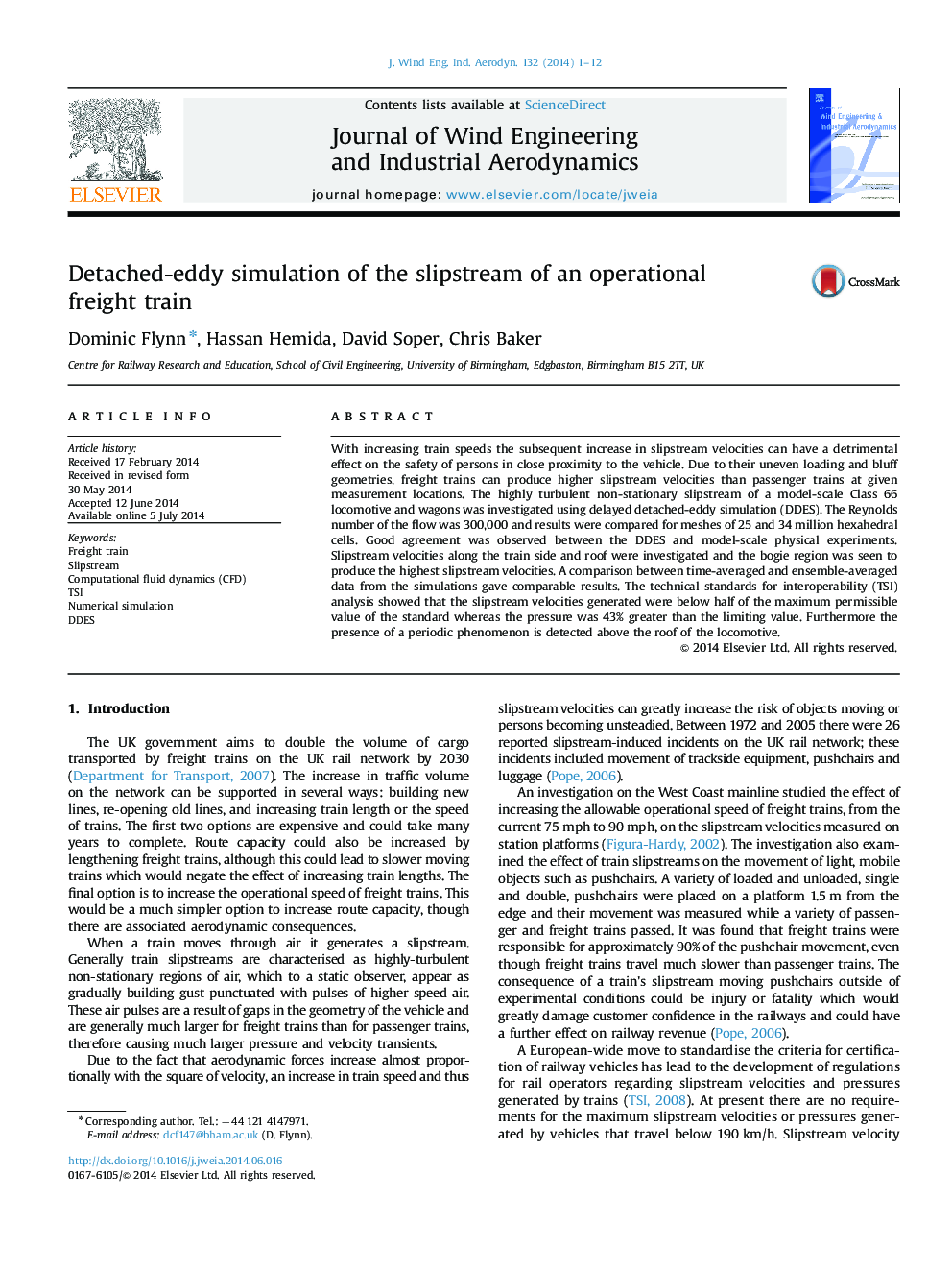| Article ID | Journal | Published Year | Pages | File Type |
|---|---|---|---|---|
| 292727 | Journal of Wind Engineering and Industrial Aerodynamics | 2014 | 12 Pages |
•A comparison between time-averaged and ensemble-averaged slipstream data from the simulations.•Greatest slipstream velocities and pressures within the slipstream of the freight train are shown to exist near the front of the locomotive.•A TSI analysis is performed.•Turbulence intensity is shown to decay along the length of the train.
With increasing train speeds the subsequent increase in slipstream velocities can have a detrimental effect on the safety of persons in close proximity to the vehicle. Due to their uneven loading and bluff geometries, freight trains can produce higher slipstream velocities than passenger trains at given measurement locations. The highly turbulent non-stationary slipstream of a model-scale Class 66 locomotive and wagons was investigated using delayed detached-eddy simulation (DDES). The Reynolds number of the flow was 300,000 and results were compared for meshes of 25 and 34 million hexahedral cells. Good agreement was observed between the DDES and model-scale physical experiments. Slipstream velocities along the train side and roof were investigated and the bogie region was seen to produce the highest slipstream velocities. A comparison between time-averaged and ensemble-averaged data from the simulations gave comparable results. The technical standards for interoperability (TSI) analysis showed that the slipstream velocities generated were below half of the maximum permissible value of the standard whereas the pressure was 43% greater than the limiting value. Furthermore the presence of a periodic phenomenon is detected above the roof of the locomotive.
